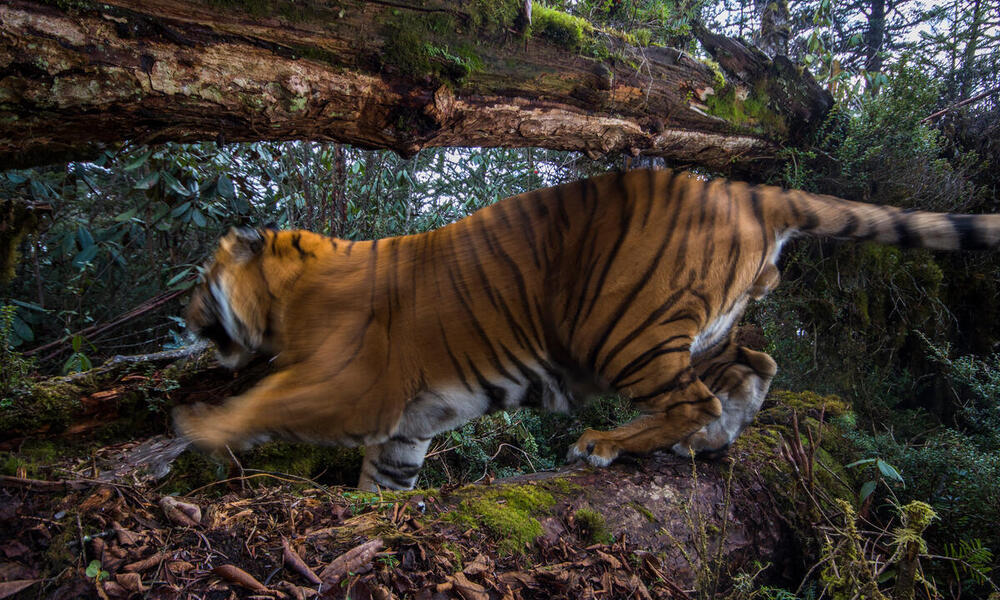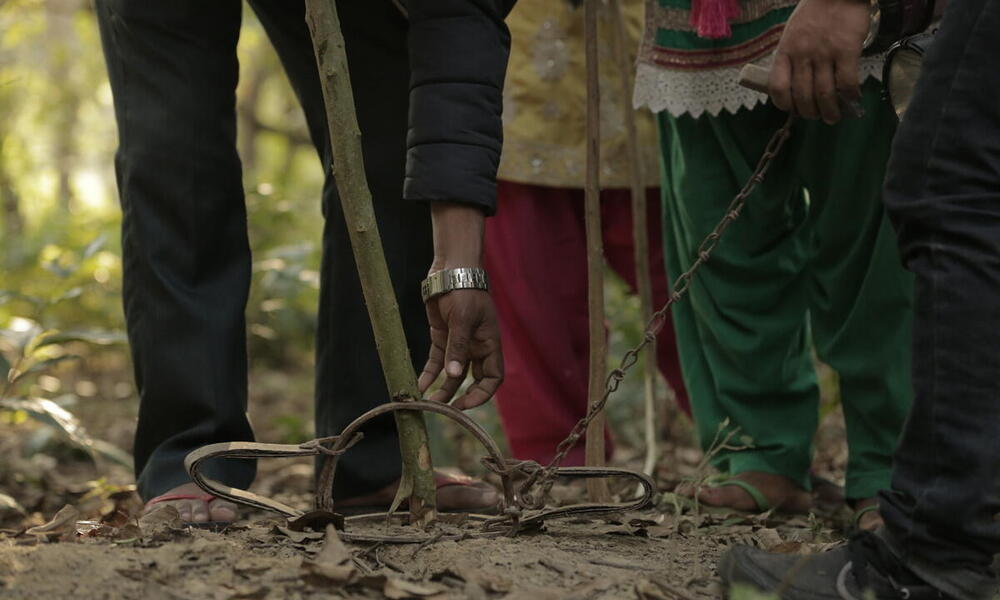In Malaysia’s Belum-Temengor Forest Complex, one of the world’s oldest rain forests and part of the largest continuous forest in the country, a team of rangers were walking through the thick, dense vegetation carrying out a routine patrol. This pristine area is home to 14 of the globally threatened mammal species, including the Asian elephant, sun bear, and Malayan tapir. These rangers are determined to protect them.
Suddenly, they heard a noise that stopped them in their tracks: a thundering roar, accompanied by groans and growls, coming from only a few feet away. Another rare and critically endangered species that roams Belum-Temengor is the tiger.
The sound of the roar did not move closer or further away.
The team bravely decided to approach what they suspected was an injured animal. They found a tiger, larger than an adult human, lying on the ground, held fast by the tightened noose of a thick cable snare that ripped deep into its flesh. The team removed the snare and sent the tiger to a facility for treatment, but unfortunately, the big cat died two weeks later from an infection.
This young male tiger is one of untold numbers of snare victims. Experts estimate that people set over 12 million snares every year throughout protected areas in Cambodia, Lao People’s Democratic Republic, and Viet Nam. While this is an astounding figure, the total number of snares laid across Asia is likely much higher.
In Malaysia, snares are a key reason tiger numbers have plummeted to fewer than 150 individuals. One landscape—Belum Temengor—lost over half of its tigers in a two-year period from 2016-2018, mainly due to snares.
“One time I was patrolling, I was checking around one of my areas. In that single day, I found a hundred wired snares,” said Merapi Mat Razi, a senior member of an Indigenous patrol team from the Jahai tribe in the Belum-Temengor Forest Complex. “I found many animals caught—the sun bear, tiger, wild boar, barking deer, and many more. I found skulls. I felt furious. I destroyed all those snares, a hundred of them in a day.”
And these snares don’t discriminate, trapping a variety of animals. A new WWF-TRAFFIC briefing highlights how big cats across Asia, including leopards, snow leopards, and Asiatic lions also suffer from the widespread use of this silent killer throughout their range.




